How Call-to-Action QR Codes Help Marketers Drive Sales
By Paul Bobnak | October 26, 2022
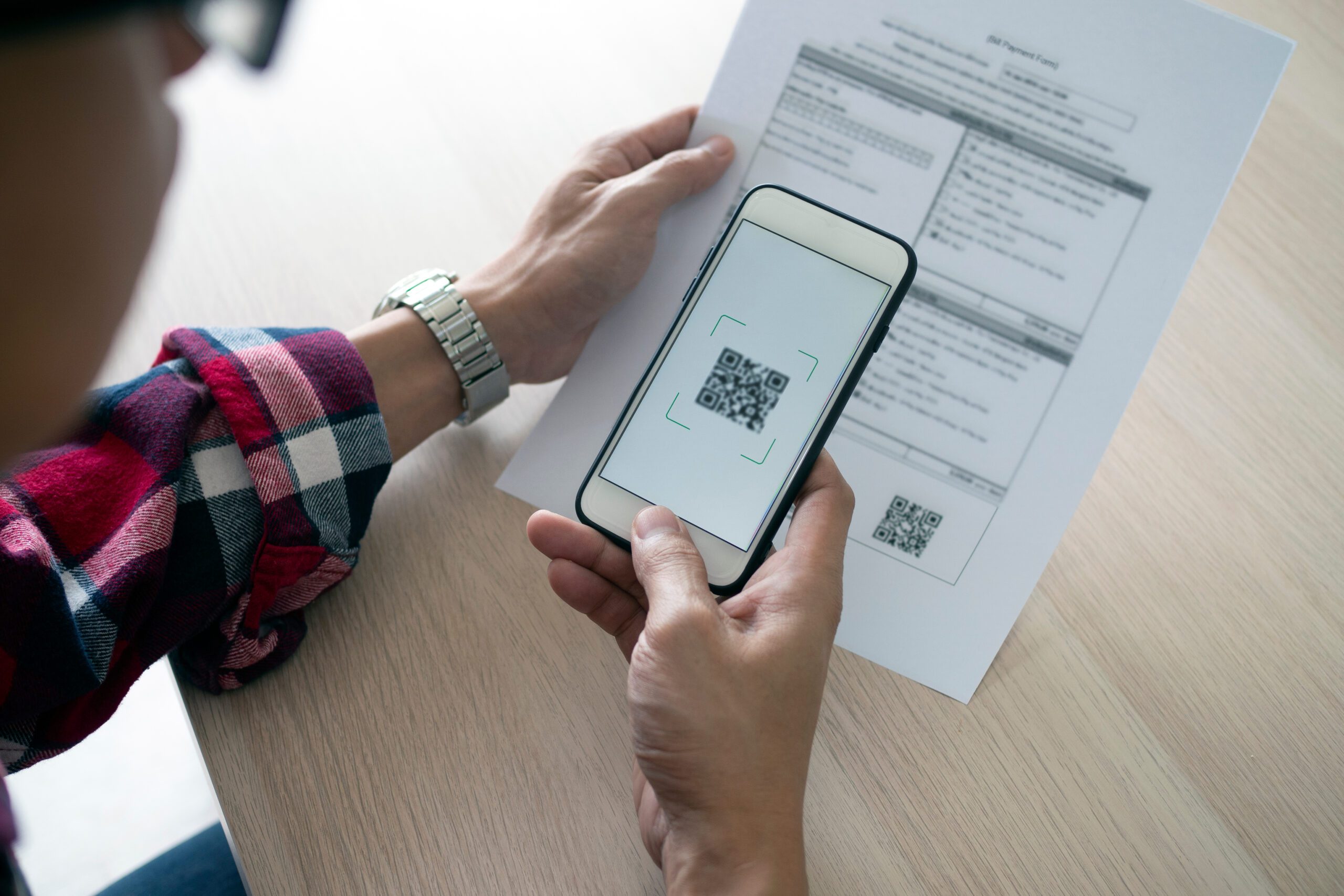
A QR code call to action (CTA) is an important factor in helping today’s marketers increase response. When done well, they bridge the gap between the physical and digital worlds. And they accomplish it quickly. Quick Response (QR) codes were invented in 1994 as a way for manufacturers to manage inventory and logistics by scanning barcodes. When used with mobile devices to promote marketing and other messages in the years that followed, they fell by the wayside after some initial interest.
Several events reversed that shift:
QR code readers became a standardized, automatic smartphone camera feature; previously, separate QR code scans were required.
Marketers figured out that consumers wanted more than just a link to a website to respond.
The pandemic dramatically increased demand for touchless tech touchpoints as a communications lifeline.
Today, customers no longer face a long learning curve with using QR codes. Increasingly, consumer products and services include a QR code as part of the user experience. And even better, marketers make it easier and less mysterious to respond by including a clear call to action. Many opportunities exist to put them to work, as we’ll see below.
How Do Call-to-Action QR Codes Work?
QR codes make it easy and even fun for consumers to engage with a brand through a quick, simple, and interactive process. It all starts by opening a camera app on a smartphone. Unlike standard barcodes, QR codes store about 4,000 characters. The data – such as a website or an instruction to open an app – is represented by a series of pixels in a square pattern that the camera’s scanner feature reads from right to left and up to down.
The following data points about the customer are tracked:
Location of scans
Time of scans
Number of scans
OS for device used to scan
And on the mobile device, the webpage or app is instantly opened, connecting the physical and digital worlds for the consumer.
Benefits of a QR Code Call to Action in a Marketing Campaign
A QR code call to action – when done well – supports the success of the message, marketing campaign, or task at hand.
Here are some of the many benefits for using one:
The code and the copy that goes with it is hard to miss, while a URL or phone number might stick out less.
QR codes on a print piece use that tactile presence to attract attention, and lead the customer journey that continues online.
Having QR codes turns print into a high-value communications tool that links to websites, videos, social media, or other digital experiences.
It requires only one action (a scan) to activate; not typing a web address or phone number avoids customer mistakes and saves them time.
A QR code call to action doesn’t need a physical address, email address, or even a device’s location to be turned on in order to be effective – it’s the ultimate first-party data
Interactive print – because it is physical as much as it is digital – increases conversion. QR codes on a tactile piece help trigger an emotional response or promote recall, creating opportunities for further engagement or sales.
While the CTA remains the same, the QR code can be redirected for a variety of reasons, such as changing your offer or targeting another segment of your audience.
Tracking and robust analytics allow you to optimize QR code calls to action in your campaigns.
Similarly, A/B testing of QR code CTAs also leads to A/B testing and optimizing of microsites and landing pages.
QR codes can be used to set up reminders of events, sales, or other limited-time offers, extending the staying power of that effort or campaign.
QR Code Call to Action Examples
There are dozens of creative and successful ways to use QR codes for your business or organization. With a simple scan by their mobile device, your customers or target audience connect with your message. Let’s take a look at some examples of how marketers drive response with a QR code call to action:
Direct Mail
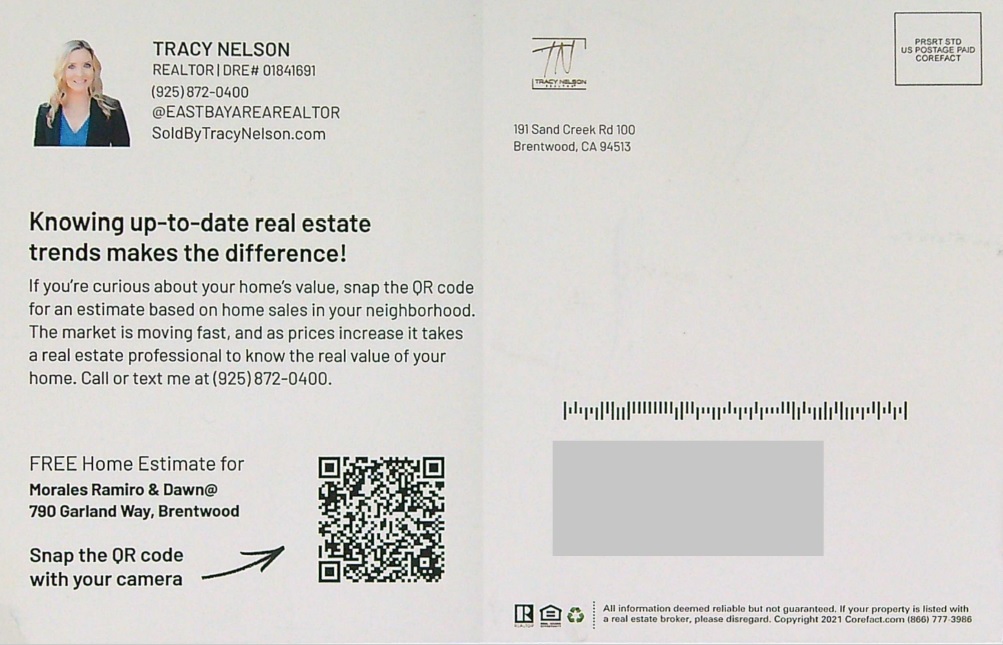
Of course we’d put this one first! An arrow directs the consumer’s attention to the QR code located on the address side of this postcard. On the landing page, after supplying an email address, the prospect has to verify the personalized pre-filled information on file about their property (address, square footage, lot size, number of bathrooms and bedrooms) to receive the personal quote.
Print Ads
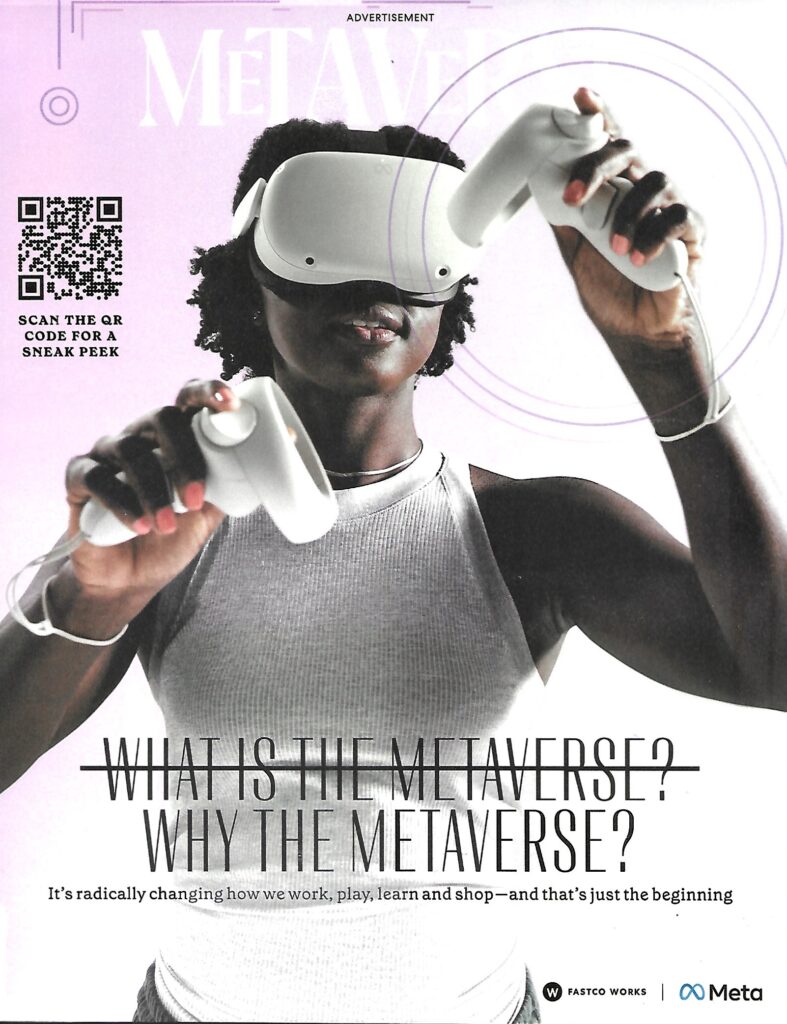
The QR code call to action on this magazine ad promises a “sneak peek” at how the “Metaverse” may transform online and physical worlds.
Screens
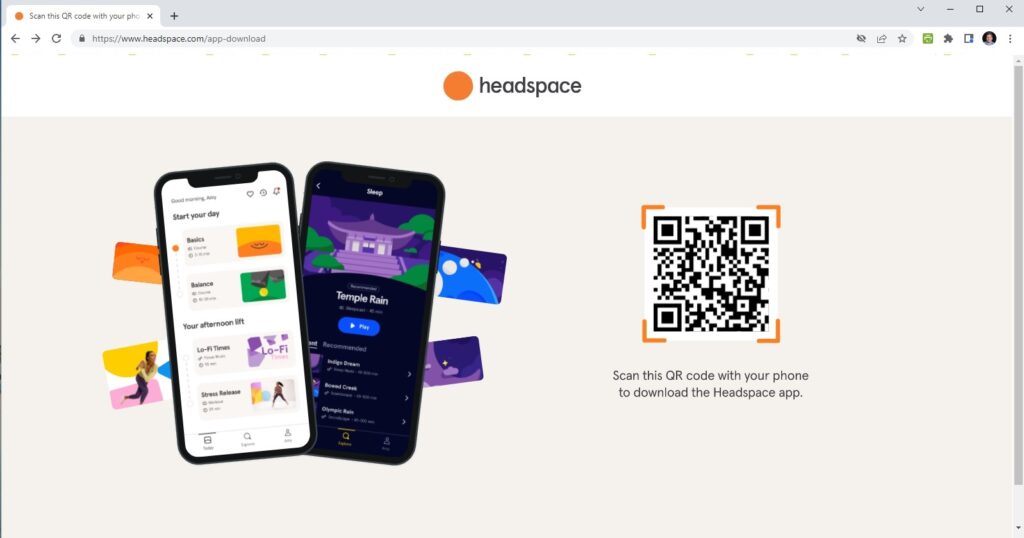
Electronic screens – like those for TVs and PCs – also incorporate QR code calls to action in displaying a marketing message. Some TV programs and commercials today include QR codes in their programming, capturing viewers to their websites or social sites. In this example, a consumer begins the download of an app onto their phone by scanning the QR code on this website, instead of looking through an app store first.
Restaurant Menus
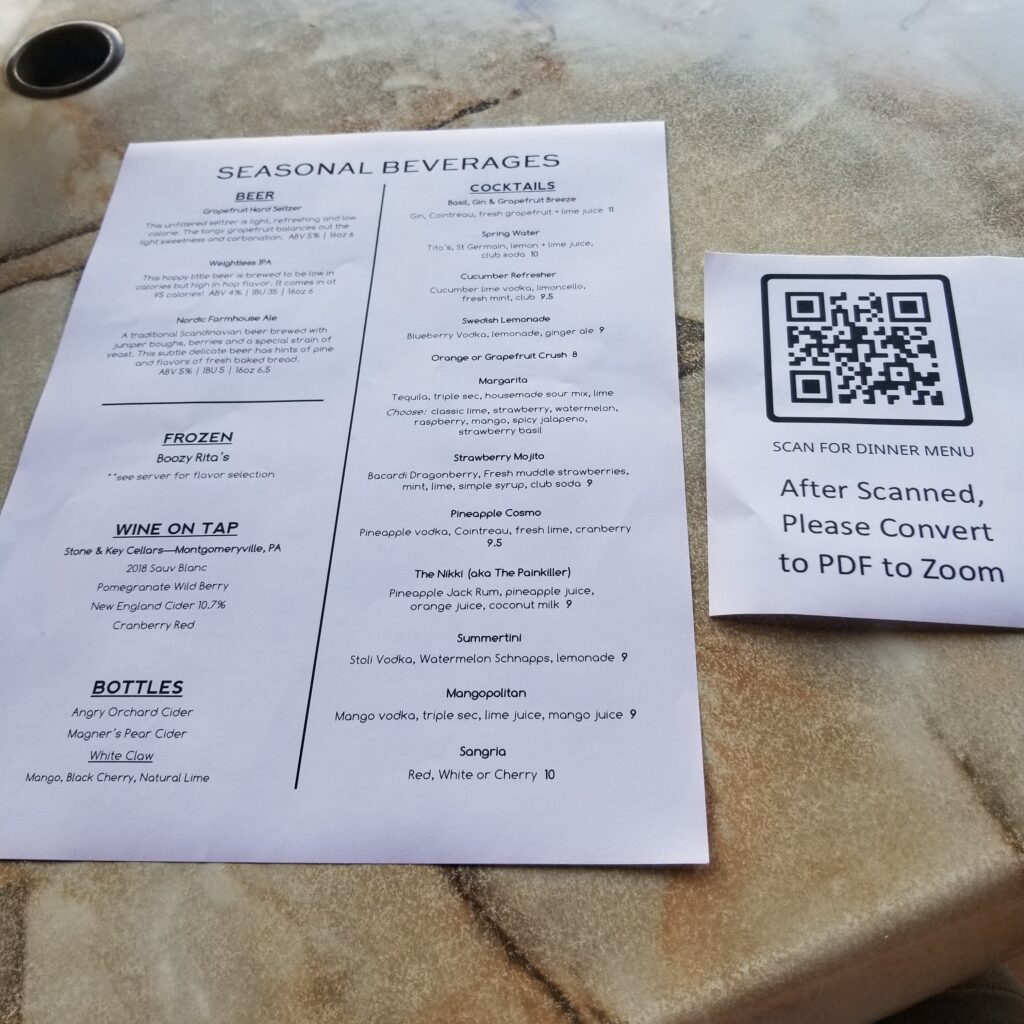
The pandemic led food establishments to replace physical menus with QR codes. And while health and safety benefits were an obvious benefit, they found that they also provided more flexibility for pricing and product availability.
Retail Receipt
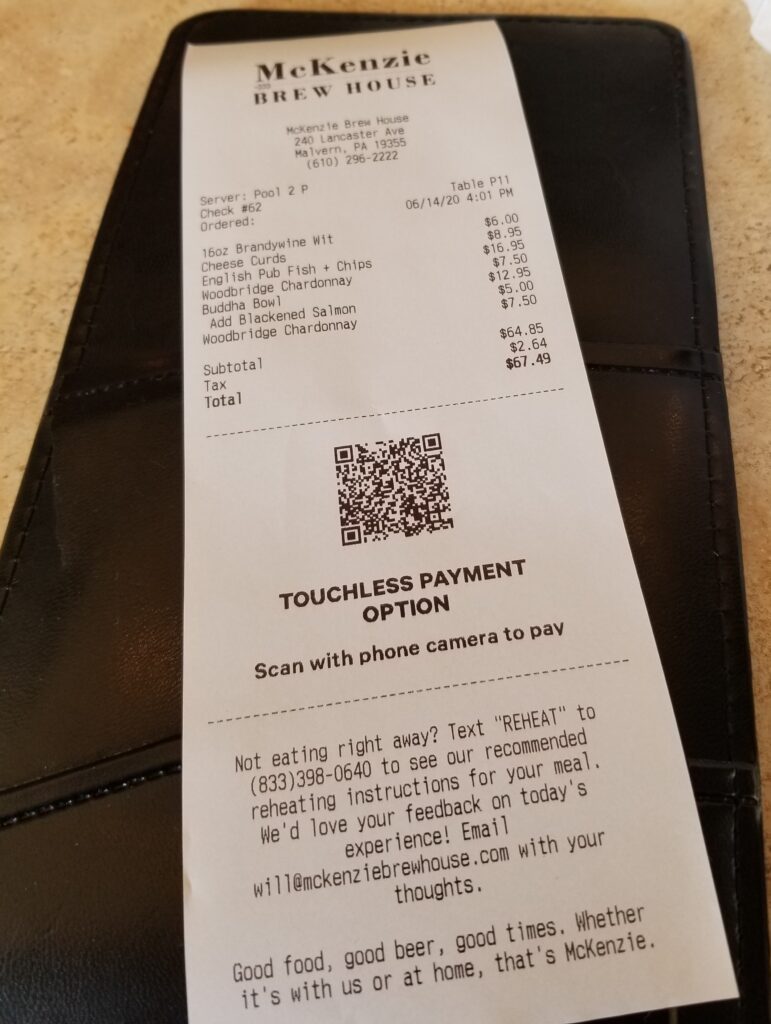
A paper receipt for a retail purchase – a restaurant in this case – highlights the QR code payment option. When scanned, it goes to a 3rd party payment processor to make the transaction.
Signage
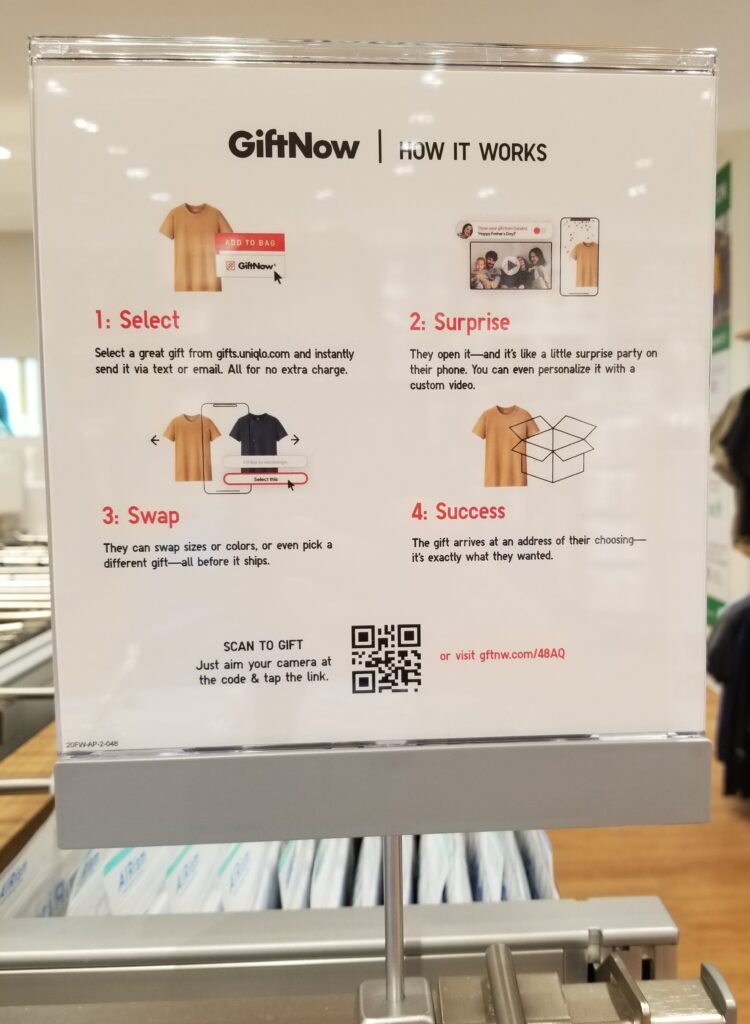
Well-placed signs provide countless opportunities to engage and activate customers with a QR code call to action. One of the best areas is brick-and-mortar retail. In this instance, a shopper searching for a gift can check out a store’s product selection, then use a QR code to order an item and gift it through the mobile site or app.
Point-of-Sale(POS)
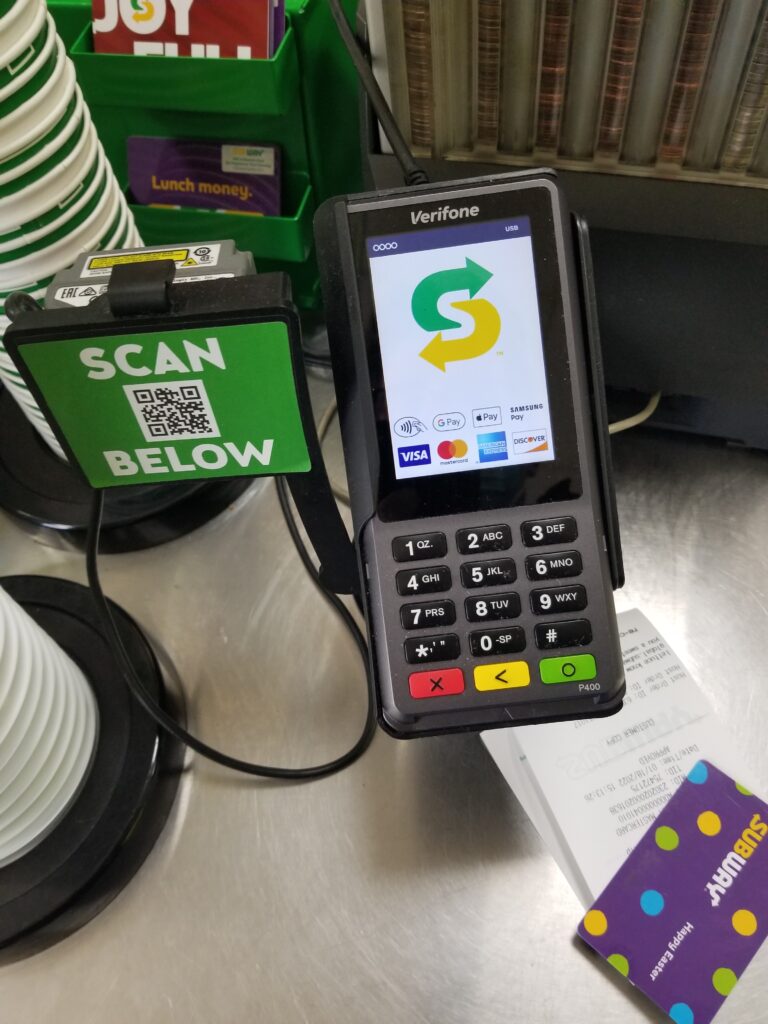
The countertop card reader at this Subway shop lets customers scan coupons or their phone to make a payment. With each transaction, the retailer learns more about the behavior and preferences of their customers. That information helps direct retail campaign management at the local level.
Business Card
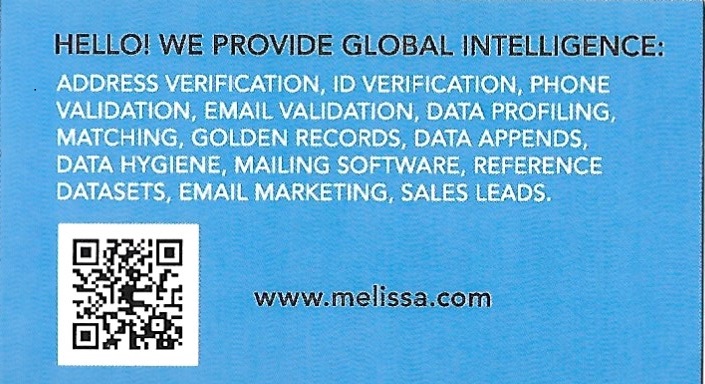
Business cards are so old school, right? Maybe. But keep a foot in both physical and digital worlds by promoting your company or yourself with a QR code on one.
Product Packaging
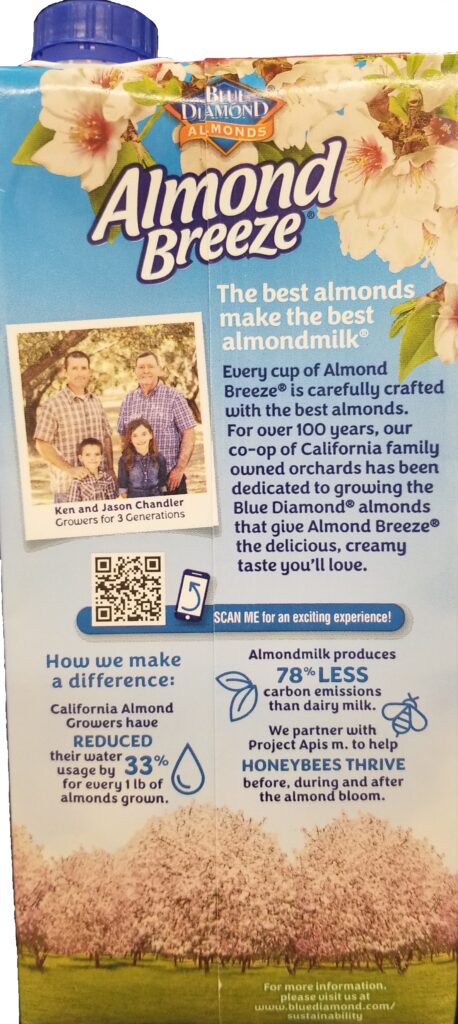
The call to action for the QR code on the back of an almond milk container teases “an exciting experience”, which turns out to be an augmented reality game.
QR Code CTA Best Practices
To deliver effective calls to action, your QR codes should follow several best practices.
For example:
Correct specifications – Your QR code frame can’t be too large or too small for the place where it’s displayed. Also, be careful of what surface or substrate it appears on; if it becomes too worn or blurry, it can’t be read.
Testing – For QR code calls to action, constantly consider ways to boost your response and conversion. Test colors, fonts and sizes, placement, personalization, and copy, among other factors.
Brand colors – You want to present a unified brand experience across all of your channels. Depending on your code generator, customize your mail’s QR codes with your brand colors as well as your logo.
Tracking – As I previously noted, software tracks where the scanners are based, what operating systems they use, and scans by date. This gives you a lot of insight about your campaign lifecycles. And when you track QR code data in real time, you have a chance as well to tweak campaigns as they are run.
Helpful instructions – Some consumers are unfamiliar with the technology or hesitant to use it. According to one recent survey, only 31% of people 65+ had used a QR code in the previous 3 months. So do like the examples above and offer a suggestion: “Scan this QR Code with your phone’s camera!”
Emphasizing the offer – Instead of a bland caption, motivate your customer with copy that emphasizes the value to them, such as urgency or saving money (e.g., “Scan now to save 15% on your insurance”)
Keeping up with dynamic QR codes – While static QR codes link directly to a destination, dynamic QR codes link to an intermediate point that can be changed at any time to go to another destination. This gives marketers flexibility based on response or changing goals or conditions in their marketing campaign.
How to Make QR Code Calls to Action Work for Your Direct Mail Marketing
Adding calls to action QR code to your direct mail campaign does much more than improve traffic to your website or activate an app. They are part of a strategy to meet your customers wherever they are, in whatever channel works best for them.
Here at mailing.com, we’re using the latest technology to power the direct mail we manage for our partners. Contact our team to find out how we can incorporate QR code calls to action into your marketing campaign’s strategy and design. We’d love to hear from you!


